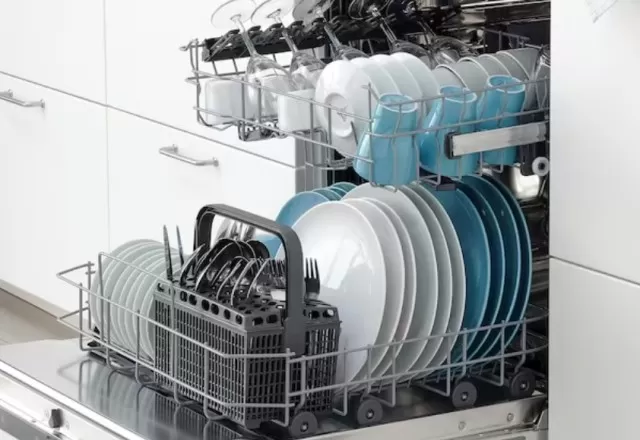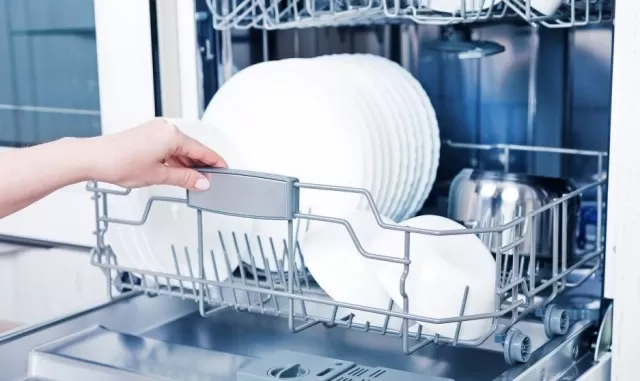Dishwashers have become an essential appliance in most households, eliminating the need for daily hand-washing of dishes.
Not only do dishwashers save us from the daunting task of tackling a pile of dishes every day, but they also consume less water and energy compared to manual washing.
It’s a win-win situation that combines convenience with energy efficiency. However, did you know that there’s a way to further enhance the energy efficiency of your dishwasher?
By simply selecting the air-dry setting on your dishwasher, you can optimize its energy efficiency.
In the past, the air-dry setting made a significant difference in energy consumption compared to the standard heat-dry setting. But with advancements in technology, does the air-dry setting still have the same impact as it once did? Let’s explore what you need to know about using the air-dry setting on your dishwasher and whether it truly offers a better option for energy efficiency.
How Dishwasher Drying Cycles Work

In the past, dishwashers typically utilized a heat-dry process to dry dishes after the wash cycle.
This involved a heating element at the bottom of the dishwasher that generated hot air, which was then circulated by internal fans to dry the dishes. However, this method had drawbacks such as the potential for warping and melting of plastic items placed on the bottom rack and wear and tear on the appliance over time.
As a result, modern dishwashers, especially ENERGY STAR–certified ones, have adopted a new drying process known as condensation drying.
Condensation drying is made possible by using stainless steel tubs in modern dishwashers, replacing the previous plastic tubs.
This method involves rinsing the dishes with hot water at the end of the wash cycle. When the hot and moist air inside the dishwasher comes into contact with the cooler stainless steel interior, condensation occurs.
This condensation causes the water to be drawn off the dishes and drained at the bottom of the tub. Condensation drying is not only more energy-efficient but also hygienic and safe for both your dishes and the dishwasher itself compared to the traditional heat-dry setting.
On the other hand, the air-dry setting relies on circulating room-temperature air around the dishwasher using internal fans to dry the dishes.
Most new dishwashers are equipped with this option, which is even more energy-efficient and gentler on the dishes compared to condensation drying. However, it has its own limitations.
Do All Dishwashers Have an Air-Dry Setting?
Unfortunately, not all dishwashers come with an air-dry setting.
Availability depends on the make and model of your appliance, as well as its age. However, even if your dishwasher lacks a built-in air-dry setting, you can still air-dry your dishes by selecting an express or delicate wash cycle that excludes the drying phase. After the cycle is complete, simply crack open the dishwasher door slightly to allow excess moisture to escape and enable the dishes to air dry.
Pros and Cons of Using the Air-Dry Setting

Studies have shown that the air-dry setting consumes approximately 15% less energy compared to the standard heat-dry setting.
However, when it comes to energy efficiency between the air-dry setting and condensation drying, specific figures are not as readily available. Additionally, the lack of heat in the air-dry setting is considered gentler on both the dishwasher and the dishes, reducing wear and tear.
While air drying offers these benefits, there are trade-offs to consider.
Dishes may take longer to dry with the air-dry setting, which may not be ideal if you’re in a hurry to use them for a meal. You may also find that the dishes come out slightly damp or with more water spots compared to using a heat-dry or condensation-dry setting.
It’s important to note that plastic dishes and concave items tend to retain some water and moisture regardless of the drying setting used. Another drawback is that not all dishwashers have the air-dry setting, and even if they do, it may require manual programming each time, which can be inconvenient or easily forgotten.
So, Is Air-Drying Better?

Ultimately, whether the air-dry setting is preferable depends on personal preference.
Modern dishwashers are already more energy-efficient than their predecessors, blurring the distinction between air-drying and standard drying settings. While air-drying remains the more eco-friendly and energy-efficient option, some may find it inconvenient and not worth the minimal energy savings.
However, if you’re looking to reduce energy consumption in your home and don’t mind the slightly longer drying time, switching to the air-dry setting can be an easy way to improve your home’s environmental impact with a simple button press.
*The information is for reference only.